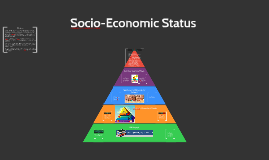
Per capita income is the average income of each individual. Half of households reported incomes above the median income and half of households reported incomes below the median income. The median household income is the mid-point in the range of reported household incomes.
#Socioeconomic status zip#
The zip codes with the highest educational attainment were concentrated in the midtown area, south Tulsa, and the south suburbs. This trend has been consistent since 2011. In 2016, educational attainment for Tulsa County was 88.8 percent, which was higher than both Oklahoma (87.3 percent) and the U.S. With regard to gender, females had a higher educational attainment (89.7 percent) as compared to males (87.9 percent). About 56 percent of Hispanics had a high school education or higher. This was highest in whites (90.8 percent), followed by blacks (88.6 percent). Tulsa County was estimated to have an overall educational attainment of 88.8 percent in 2016, according to the American Community Survey. Children from low SES households and communities tend to develop academic skills more slowly and have increased dropout rates, which can perpetuate low SES in the community (2). It is presented as a percentage of the total population 25 and older, based on 2016 American Community Survey 5-year estimates.Įducation is a basic component of socioeconomic status, because it shapes future occupational opportunities and achievement. This chapter highlights many of the disparities between geographic location and race/ethnicity that exist in Tulsa County, such as educational attainment, poverty status, and income.Įducational attainment is defined as completion of at least a high school education by the population age 25 and older.

Low socioeconomic status (SES) in childhood leads to a variety of issues that result in poor income and health in adulthood (2).īy addressing the conditions in which residents live, learn, work, and play, we aim to create sustainable change that leads to a healthier population, society, and workforce (1). Living in poverty, for example, is often accompanied by a variety of chronic and acute stressors that impact physical and mental health outcomes. While these issues are complex, socioeconomic status (income, educational attainment, financial security, social status, etc.) can impact quality of life and opportunities. Receive Email Updates.The term 'social determinants of health' is often used to highlight the idea that health is influenced by the conditions in which we live-health is determined by access to social and economic opportunities, resources and supports available in homes and communities, educational opportunities, workplace safety, air, water and food quality, and our social interactions and relationships (1). International Journal of Health Geographics, 7(1), 1. An analysis of the accessibility of video lottery terminals: the case of Montréal. Personality and Social Psychology Bulletin, 34(11), 1514-1529. Gambling as a search for justice: Examining the role of personal relative deprivation in gambling urges and gambling behavior. Pokies and poverty: problem gambling risk factor geography in New Zealand. Problem gambling, anxiety and poverty: an examination of the relationship between poor mental health and gambling problems across socio-economic status. Search the Evidence Centre for Socioeconomic Status References
#Socioeconomic status how to#
GREO's white paper, Problem Gambling and Poverty, gives a more detailed overview of the socioeconomic factors that are linked to problem gambling risk, and recommendations for how to reduce the harms for those experiencing problem gambling and poverty. Some researchers suggest that gambling represents one of the few actions these individuals can take to significantly improve their financial situation (even if the chances are very low). Finally, areas of low SES generally have higher rates of mental disorders, unemployment, and poverty. In addition, there are often increased opportunities to gamble in low SES areas, in particular electronic gambling machines. Research shows that individuals with a low SES are at greatest risk for gambling problems. Individuals with lower SES may experience greater financial consequences from gambling because they gamble a larger proportion of their income than those with higher SES.


On the other hand, individuals with low SES may tend to have gambling problems. Socio-Economic Status (SES) is a measure of a person's economic and social position income, occupation, and education are compared to the rest of the population. The relationship between socio-economic status and gambling is complex.


 0 kommentar(er)
0 kommentar(er)
